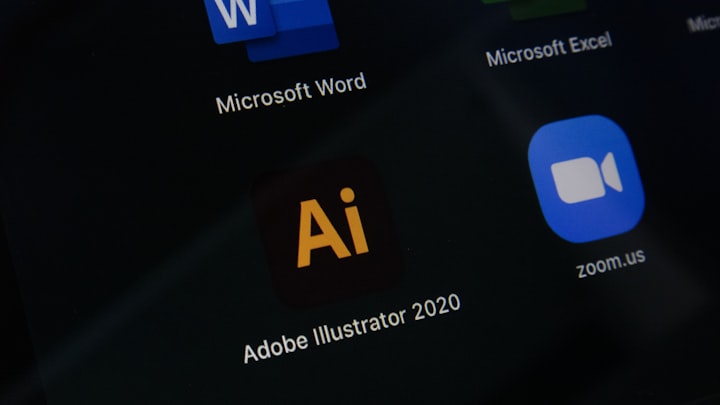Analysis of information technology needs in the banking sector
Banking

INTRODUCTION
In recent years, the banking sector has experienced significant changes in the way it operates due to advancements in information technology. With the increasing reliance on digital channels for conducting transactions and the rise of financial technology (fintech) companies, banks have had to adapt to meet the evolving needs of their customers. As a result, there is a growing need for banks to analyze and assess their information technology needs to remain competitive in the industry.
This analysis of information technology needs in the banking sector will examine the current trends and challenges facing banks, including the shift towards digital banking, the need for improved cybersecurity measures, and the integration of new technologies such as artificial intelligence and blockchain. Additionally, this analysis will explore the benefits of investing in IT infrastructure for banks, including increased efficiency, enhanced customer experience, and greater competitiveness in the market.
Overall, the analysis of information technology needs in the banking sector is essential for banks to remain relevant and successful in today's digital age. By understanding the current and future technology trends, banks can make informed decisions about their IT investments, ensuring that they can continue to provide innovative and secure financial services to their customers.
1. What Is Mobile Banking
1 Mobile banking is a financial service that allows customers to perform various banking transactions using their mobile devices such as smartphones or tablets. With mobile banking, customers can access their bank accounts, check their account balances, view their transaction history, transfer funds between accounts, pay bills, and deposit checks remotely, among other services.
2 Mobile banking applications are typically provided by banks and financial institutions as a convenient way for customers to manage their finances on the go. These apps can be downloaded onto mobile devices, and customers can securely log in using their account credentials to access their accounts.
3 Mobile banking offers several benefits, including convenience, accessibility, and time-saving. Customers can perform transactions at any time and from any location, without having to visit a physical bank branch. Additionally, mobile banking provides greater flexibility and control over financial transactions, allowing customers to manage their finances in real-time.
4 Overall, mobile banking has become an increasingly popular financial service, especially among younger generations who value the convenience and flexibility of digital channels. As mobile technology continues to evolve, mobile banking is expected to play an even greater role in the future of banking.
2. History Of Mobile Banking
Mobile banking has its roots in the development of the internet and the advent of online banking in the late 1990s. In the early 2000s, the first mobile banking services were introduced, allowing customers to access their accounts and perform transactions through text messages.
In 2007, the first smartphone was released, which paved the way for the modern mobile banking era. Banks and financial institutions began developing mobile banking apps to provide customers with more convenient and user-friendly ways to manage their finances.
Since then, mobile banking has evolved rapidly, with the introduction of new features and services such as mobile check deposit, mobile bill pay, and peer-to-peer payments. In recent years, mobile banking has also become more secure, with the integration of biometric authentication, such as fingerprints and facial recognition, to prevent fraud and ensure customer privacy.
Today, mobile banking is widely used by consumers around the world, with the number of users expected to continue to grow in the coming years. The development of new technologies such as 5G, artificial intelligence, and blockchain is also expected to further transform the mobile banking landscape, providing customers with even more advanced and convenient ways to manage their finances.
3. Banking Sector introduction
The banking sector is a crucial part of the global economy, providing essential financial services to individuals, businesses, and governments. Banks play a critical role in facilitating transactions, managing risks, and providing funding for economic activities.
Banks offer a range of financial products and services, including savings accounts, checking accounts, loans, credit cards, and investment services. They also provide services such as wire transfers, currency exchange, and trade financing, among others.
The banking sector is highly regulated, with government agencies and central banks overseeing the industry to ensure financial stability and consumer protection. Banks are required to maintain certain levels of capital reserves, adhere to anti-money laundering laws, and follow other regulations to prevent fraud and financial crime.
The banking sector has undergone significant changes in recent years, with the rise of digital banking and fintech companies. Many traditional banks are investing heavily in technology to provide their customers with innovative and convenient ways to manage their finances. Fintech companies, on the other hand, are disrupting the industry by offering new and often more affordable financial services to consumers.
Overall, the banking sector is an essential part of the global economy, providing a wide range of financial services to individuals, businesses, and governments. With the rapid pace of technological advancements and changing consumer preferences, the banking sector is expected to continue to evolve and adapt to meet the needs of customers and remain competitive in the industry.
4. Use Of Mobile Banking
Mobile banking has become an increasingly popular way for customers to manage their finances. Here are some of the most common uses of mobile banking:
1. Checking account balances and transaction history: Mobile banking allows customers to check their account balances and view their transaction history in real-time. This feature provides customers with a quick and convenient way to monitor their finances and track their spending.
2. Transferring funds: Customers can transfer funds between their accounts, send money to other people, or pay bills through their mobile banking app. This feature provides customers with a convenient way to manage their finances and make payments on the go.
3. Depositing checks: Mobile banking allows customers to deposit checks remotely by taking a picture of the check using their mobile device. This feature eliminates the need to visit a physical bank branch to deposit a check, saving customers time and effort.
4. Managing credit and debit cards: Customers can manage their credit and debit cards through their mobile banking app, including monitoring their transactions, setting spending limits, and activating or deactivating their cards.
5. Accessing customer service: Mobile banking apps often provide customers with access to customer service through chatbots, phone support, or other channels. This feature allows customers to quickly resolve any issues or concerns they may have with their accounts.
Overall, the use of mobile banking provides customers with a convenient and efficient way to manage their finances. With the increasing reliance on digital channels for conducting transactions, mobile banking is expected to continue to play a significant role in the future of banking.





Comments
There are no comments for this story
Be the first to respond and start the conversation.